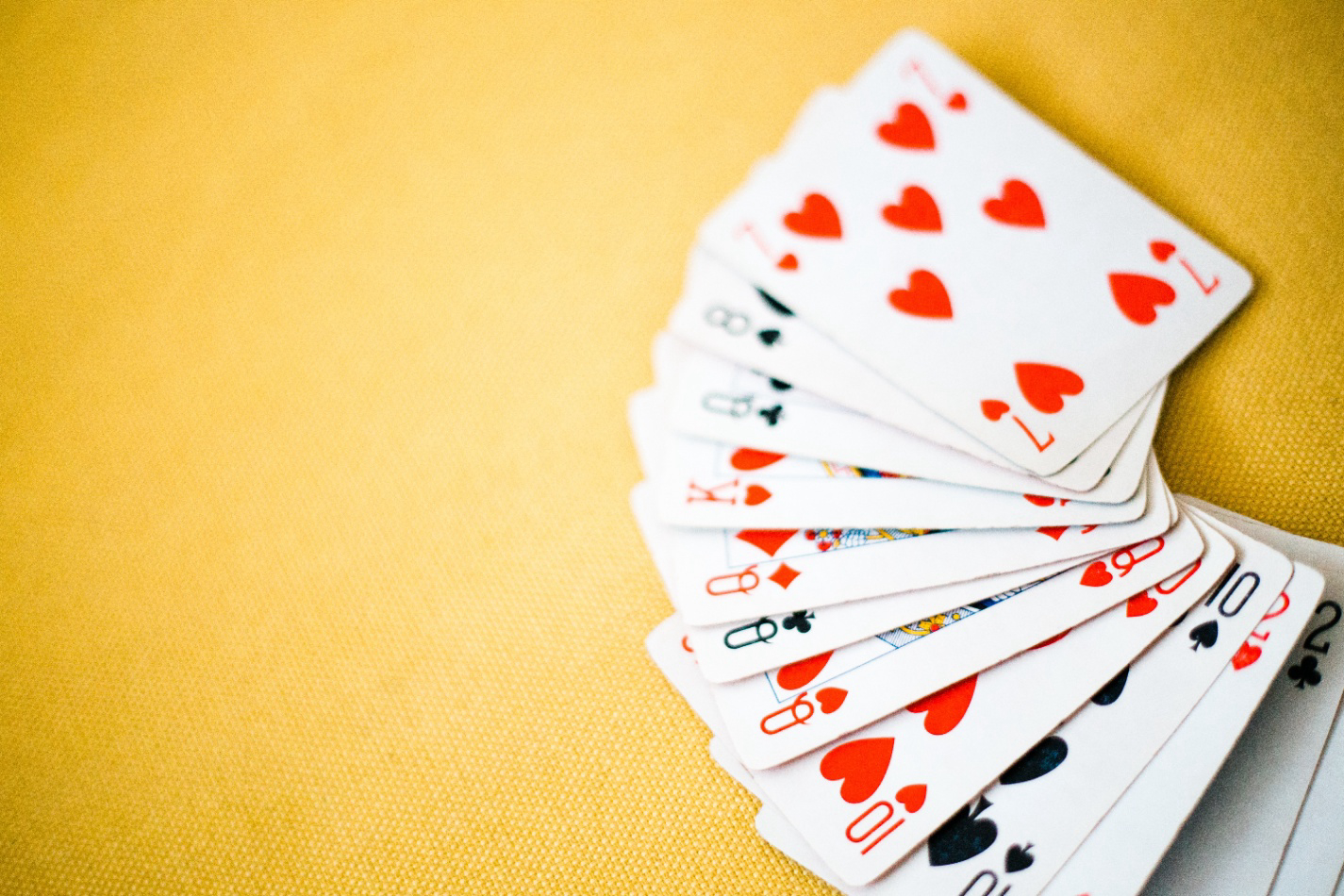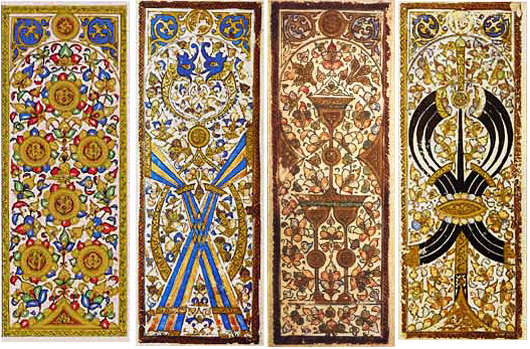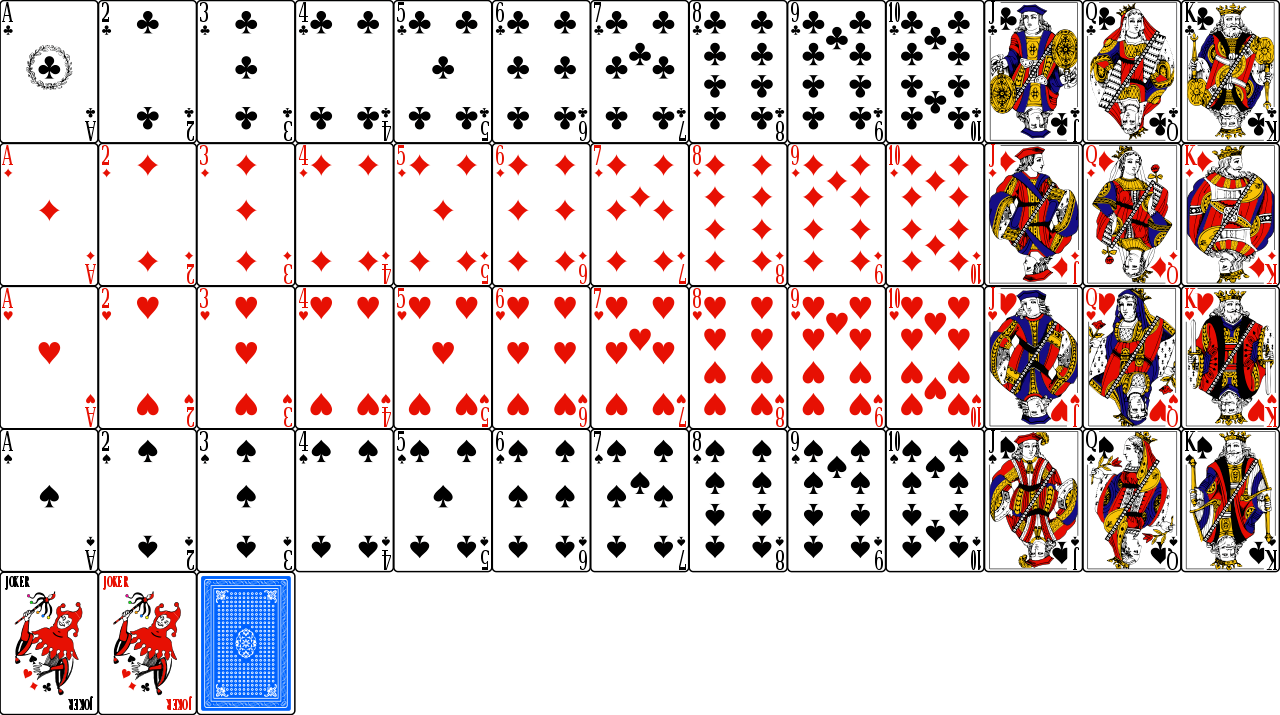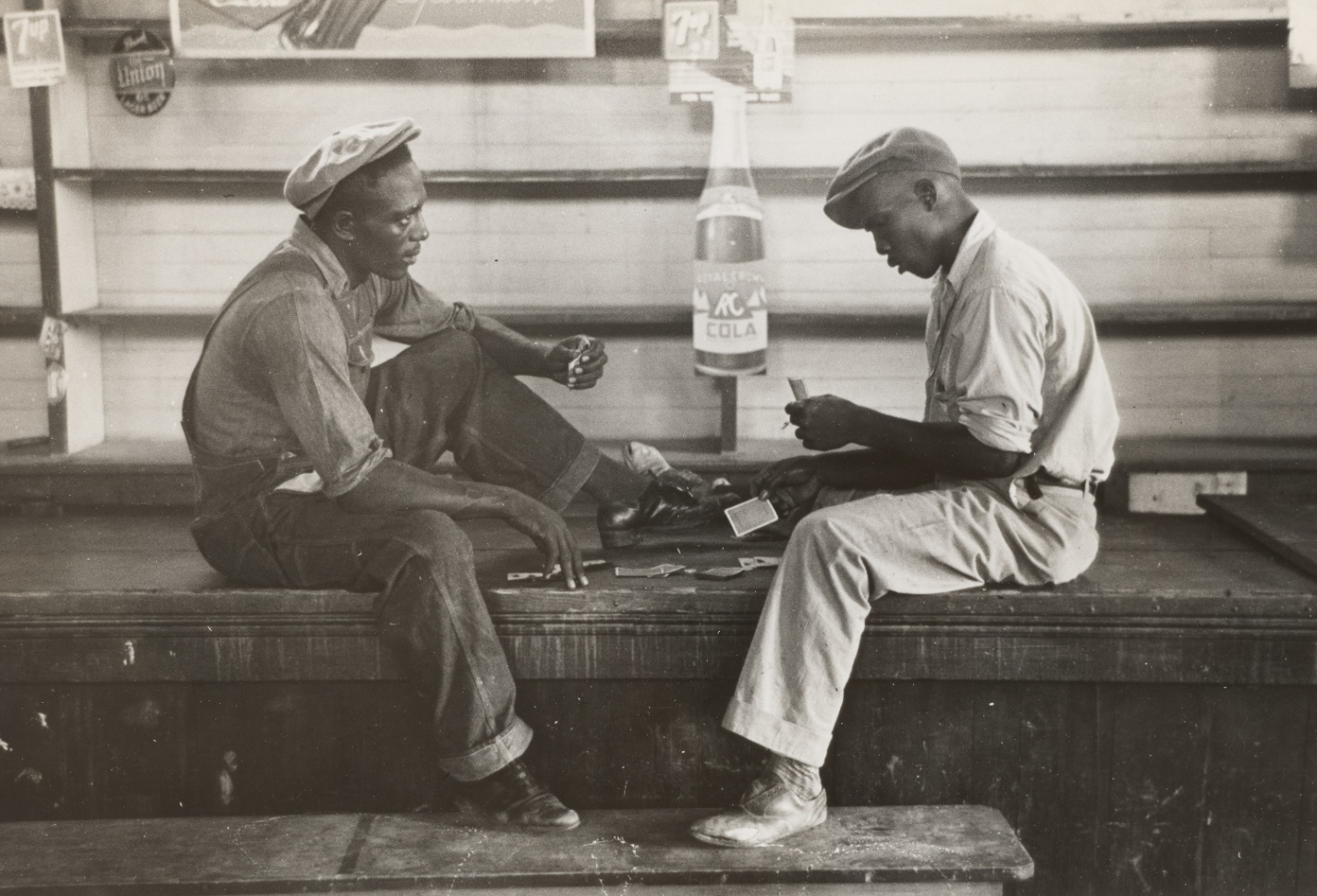
Playing cards in India is an ancient tradition. Night-long game sessions with family and friends have been a pin of gatherings in India. And this game is exceptionally popular in every corner of the country. But the ancestry of Playing Cards is perhaps not from our country and even uncertain across the entire world.
The exact origin of playing cards is the question of debate among philosophers, and even the most promising theories rely more on assumption than fact. There is a shred of explicit historical evidence that playing cards began to appear in Europe in the early 1400s, but they seem to have arrived from somewhere in the East, and may have been imported to Europe by explorers and travellers. A few theories have made connections to the cards of 12th century and even older cards in countries like China, India, Korea, Persia, or Egypt, which may have been introduced to Europe by Arabs.

Four Mamluk playing cards. Egypt
Image Credit: en.wikipedia.org
In an old manuscript dated 1377, a German monk, indicates the aspect of playing cards and several different card games in the writings. In the 1400s playing cards repeatedly appear along with dice games in sacred ceremonies as examples of gambling activities that are criticized, and there is detailed proof that a “52 card deck” included and was used in this period. The suit hints in the first European decks were swords, clubs, cups, and coins, and very likely had their origin in Italy. But by impulse and competition, the Germans also tried to establish themselves as a card-manufacturing nation in their own right and then they introduced their own suits to replace the Italian ones, and these new suits expressed their involvement in rural life because they named them on corns, leaves, hearts, and bells. The queen was also eliminated from the Italian courts, and these instead consisted of a King and two knaves, Meanwhile, the Two replaced the Ace as the highest card, to create a “48 card deck”. But the actual offering of Germany was their modes of printing playing cards. Using methods of wood-cutting and engraving in wood and copper. Then Germany achieved a dominant position in the playing card business, even shipping decks to Western Europe, which had manufactured them in the first place. Ultimately the modern suit symbols launched by Germany came to be even more familiar throughout Europe than the actual Italian ones.
After several decades and early in the 15th century, the French created some new icons for the four suits that we typically use today, i.e. hearts, spades, diamonds, and clubs, although in French they were called coeurs, piques, carreaux, and trefles respectively. The French also inclined toward a king, queen, and knave as their court cards. But the real achievement that the French emerged with was to allocate the four suits into two red and two black, with more simplified and distinct symbols. This meant that playing cards could be produced with stencils. With some preferable methods in manufacturing paper, the slower and expensive traditional procedures were replaced with a better profitable output. And that's how the Germans lost their superiority over the playing card market and the French decks spread all over Europe.

52 French playing cards with jokers
Image Credit: en.wikipedia.org
Another fascinating aspect of the French dominance of playing cards in this period is the interest offered to court cards. Many French factories began giving the court cards notable names from the history, the more well-known and commonly accepted ones were, King David (Spades), Alexander the Great (Clubs), Charlemagne (Hearts), and Julius Caesar (Diamonds), symbolizing the four wonderful dynasties of Jews, Greeks, Franks, and Romans. Other prominent symbols illustrated to the Queens include the Goddess Athena (Spades), Judith (Hearts), Jacob's wife Rachel (Diamonds), and Argine (Clubs). The Knaves were commonly designated as La Hire (Hearts), Charlemagne’s knight Ogier (Spades), Hector the hero of Troy (Diamonds), and King Arthur's knight Lancelot (Clubs). The popular postures and clothing that we determine in a recent deck of playing cards today uncover their origins in symbols like these, but we cannot be distinct about the originality of details since there was a variety of postures and clothing in the French decks of this period. But finally, standardization started up, and factories within each country were ordered to use a standardized design different to their region. But it was only when playing cards migrated to England that an established design really began to monopolize the industry of playing card.
(Source - en.wikipedia.org)

This is how the playing cards wandered around the world and ended up evolving in England and then scattering to the entire world again. But playing cards did not pass through Europe without the English putting their stamp on them. With the names, hearts, spades, diamonds, and clubs to refer to the suits and passing over the actual French suits and other stakes. And today, in India, from high-class parties to the slum gatherings, everyone includes playing card games ranging from teen Patti, a local version of poker, to rummy. The playing card is, of course, an ancient tradition but its association with gambling shows up on the way of getting it distinguished as a decent playing game in our country.
